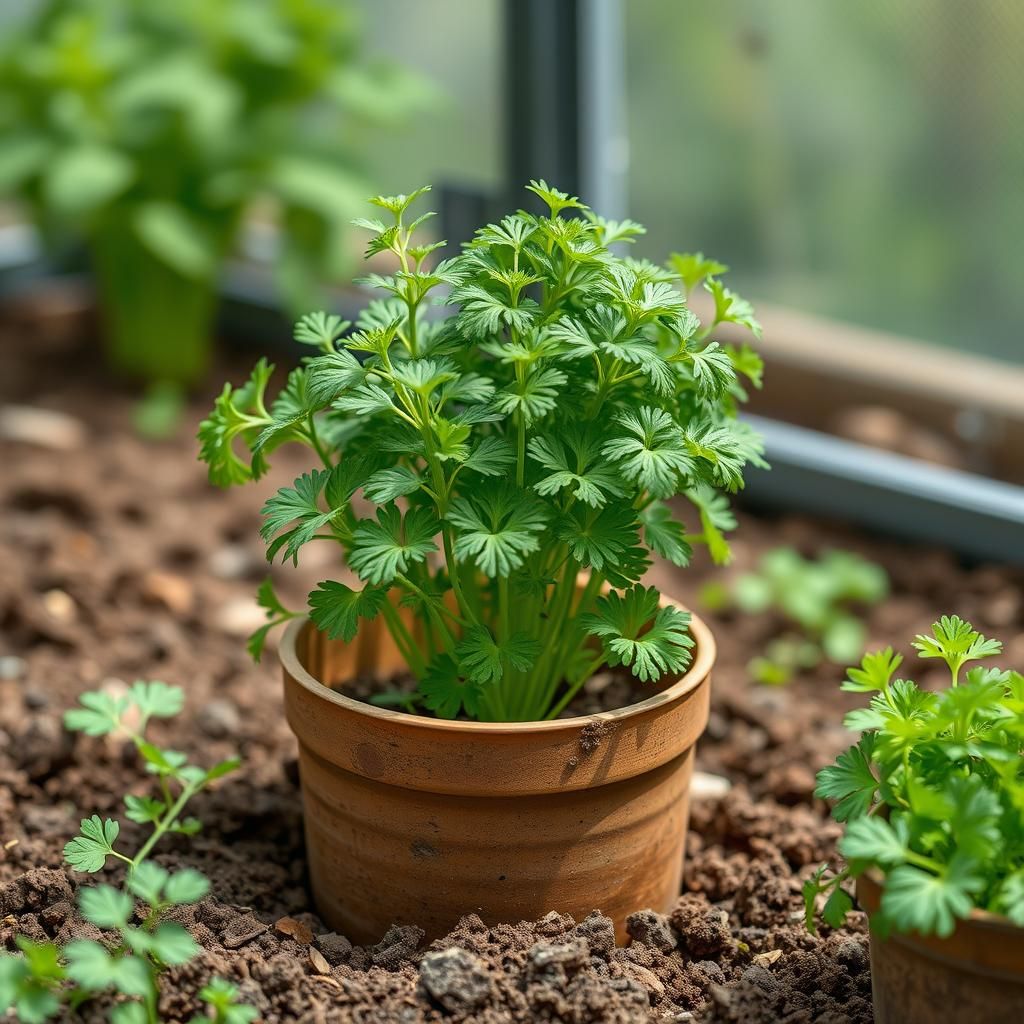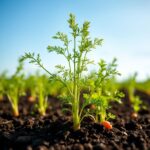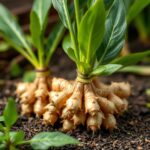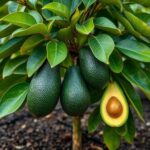Can I Grow Coriander in Summer? Tips for Successful Cultivation

Coriander, also known as cilantro, is a popular herb renowned for its fresh flavor and versatility in various cuisines. While many gardeners associate this aromatic plant with cooler seasons, growing coriander in summer can yield successful results with the right approach. In this article, we will explore essential tips and techniques for cultivating coriander during the hotter months, ensuring that your plants remain healthy and productive. From selecting the ideal variety to understanding the best growing conditions, our guide will help you harness the vibrant essence of summer-grown coriander in your culinary creations.
Can I Grow Coriander in Summer?
Yes, you can grow coriander in summer, but it requires careful attention to its growing conditions. This herb prefers cooler temperatures and may bolt or go to seed quickly in the heat. To successfully grow coriander during the summer months, choose a location that receives partial shade, especially during the hottest parts of the day. Additionally, ensuring consistent watering and good soil drainage can help keep the plants healthy. Regular harvesting of the leaves can also promote continued growth and prevent the plants from bolting too early.
Ideal Conditions for Growing Coriander in Summer
To succeed in growing coriander during the summer, it's essential to provide the right conditions. This includes a location with well-draining soil and a pH level of around 6.2 to 6.8. Coriander thrives best in temperatures between 50°F to 75°F (10°C to 24°C). If summer temperatures soar above this range, consider planting coriander in containers that can be moved to shaded areas, or use shade cloths to protect the plants from intense sun exposure.
Watering Requirements for Summer-Grown Coriander
Coriander needs regular watering, especially during hot summer days. The soil should remain consistently moist but not waterlogged. Overwatering can lead to root rot, while underwatering can cause the leaves to wilt and the plant to bolt. Aim to water early in the morning or later in the evening to minimize evaporation. Utilizing a drip irrigation system or soaker hoses can be effective for maintaining moisture levels without excessive water loss.
Common Pests and Diseases in Summer
Summer can attract specific pests that target coriander, including aphids, whiteflies, and spider mites. These pests thrive in warmer temperatures and can quickly damage your plants. Regularly inspect your coriander for signs of infestation, and use organic insecticidal soaps or neem oil if necessary. Additionally, humidity can encourage fungal diseases like powdery mildew, so ensuring proper airflow and avoiding overhead watering can help mitigate these risks.
See also:
Harvesting Tips for Summer Coriander
When growing coriander in summer, harvesting the leaves correctly is crucial for prolonging the plant's productivity. It's best to harvest the outer leaves regularly, as this encourages new growth from the center of the plant. Cut the leaves about 1 inch (2.5 cm) from the base to avoid damaging the plant. Be mindful to only remove a portion of the leaves at a time, which helps ensure that the plant can continue to thrive throughout the summer heat.
Alternative Solutions for Growing Coriander in Hot Climates
If summer temperatures are consistently high in your area, consider growing coriander in indoor gardens or using greenhouses. This allows for better control over temperature and light exposure, reducing the likelihood of bolting. Another alternative is to select heat-tolerant varieties of coriander that are bred to withstand warmer conditions. Additionally, planting coriander in cooler months, such as early spring or late summer, can also be effective in avoiding extreme heat.
| Aspect | Summer Growing | Optimal Temperatures |
|---|---|---|
| Soil Type | Well-draining, rich in organic matter | 50°F - 75°F (10°C - 24°C) |
| Watering | Consistent moisture without waterlogging | Early morning or late evening |
| Pests | Aphids, whiteflies, spider mites | High temperatures attract pests |
| Harvesting | Regularly remove outer leaves | 1 inch from the base |
| Alternatives | Indoor growing, heat-tolerant varieties | Cooler months planting |
Essential Tips for Growing Coriander in Hot Weather
Growing coriander in the summer can be a challenge due to high temperatures that may cause the plant to bolt or go to seed prematurely. To ensure successful cultivation, it is crucial to provide the plant with sufficient shade, consistent watering, and well-draining soil. Choosing a variety that is specifically suited for warm conditions, such as slow-bolting coriander, can also contribute to a more fruitful harvest. Regular harvesting encourages bushier growth and can help delay bolting, which is essential for enjoying fresh leaves throughout the season.
Choosing the Right Variety for Summer Growth
Selecting the right variety of coriander is an important step in successful summer cultivation. Look for slow-bolting types, as these are specifically bred to withstand higher temperatures while still producing lush, flavorful leaves. Some popular varieties include 'Santo' and 'Leisure', which have been shown to perform well in warm climates. Always check with local garden centers or seed suppliers for recommendations tailored to your area's specific climate conditions.
Optimal Planting Time for Summer Coriander
Timing is critical when it comes to planting coriander in summer. Ideally, you should sow seeds in early spring or late summer to avoid the most intense heat. This allows the plants to establish before temperatures peak, helping to ensure vigorous growth. If you live in a particularly hot region, consider starting seeds indoors and transplanting them once temperatures become more favorable or opt for succession planting to extend your harvest window.
See also:
Watering Techniques for Maintaining Healthy Plants
Providing consistent and adequate water is key to keeping your coriander plants healthy during the summer. Watering deeply and less frequently encourages deeper root growth, which is essential for thriving in hot weather. Make sure the soil remains consistently moist but not waterlogged, which can lead to root rot. Using a mulch layer can help retain soil moisture while also regulating soil temperature.
Soil Requirements for Thriving Coriander Plants
The type of soil you use for planting coriander significantly impacts its success during summer months. Opt for well-draining, nutrient-rich soil that has a pH between 6.2 and 6.8. You can enhance soil quality by mixing in compost or well-rotted manure to improve fertility and drainage. Adding organic matter will also help retain moisture, which is crucial during periods of intense heat.
Harvesting Tips for Maximizing Yield
To maximize your yield of coriander during the summer, start to harvest the leaves when the plant reaches about six inches tall. This encourages bushier growth and delays the bolting process. Always cut from the outer leaves, allowing the inner leaves to continue growing. Regular and proper harvesting also prevents the plant from going to seed too quickly, thus prolonging your growing season and ensuring a continuous supply of fresh herbs for your culinary needs.
Questions from Our Readers
Can I grow coriander in summer?
Yes, you can grow coriander in summer, but it may require some extra steps to ensure success. Coriander thrives in mild temperatures, so during the hot summer months, it's best to plant it in partial shade and keep the soil moist to prevent bolting.
What conditions are ideal for growing coriander in summer?
The ideal conditions for growing coriander in summer include well-draining soil, plenty of sunlight, and moderate humidity. Ensuring that your coriander receives enough water while avoiding waterlogging is essential to help it flourish in the heat.
See also:
How often should I water coriander in summer?
In summer, you should water your coriander regularly, about two to three times a week, depending on the weather. Make sure the top inch of the soil remains moist but not soggy, as overwatering can hinder growth and lead to root rot.
Can I harvest coriander leaves during summer?
Yes, you can harvest coriander leaves during summer, but be careful to do so before the plant bolts. Frequent trimming of the leaves promotes bushier growth, allowing you to enjoy a steady supply of fresh coriander throughout the hot months.

If you want to read more articles like Can I Grow Coriander in Summer? Tips for Successful Cultivation, we recommend you check out our Seeds category.
Leave a Reply
Related Articles